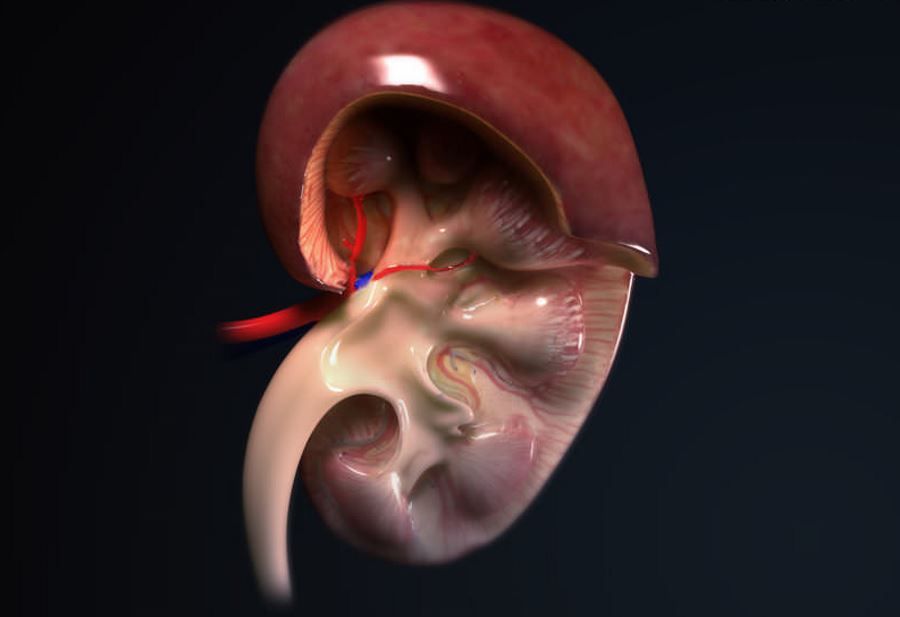Invention from UW and WUM will help treat serious kidney diseases
The University of Warsaw, together with the Warsaw Medical University, is developing a new diagnostic method to detect protein in the urine, as well as to predict its occurrence in advance. This will significantly reduce the amount of steroids taken to treat nephrotic syndrome.
The invention of the cooby dr. hab. Prof. UW Maciej Mazur from the UW Department of Chemistry, as well as Dr. Elżbieta Kuźma-Mroczkowska and Dr. hab. n. med. Małgorzata Pańczyk-Tomaszewska from WUM will soon enter the market under the banner of a new university społki spin off – Nephrolab Plus.
– On the basis of our research to date, we have confirmed that the developed diagnostic kit indicates the presence of protein in the urine. After the testoin the laboratory prototype, and will take several months, we will be able to bring the new product to market – mowi Professor Maciej Mazur (UW Department of Chemistry).
One of the biggest advantages of the solution is the simplicity and unambiguity of receiving the result. Conducted at home, the tests involve adding a lozenge to a small pr collected in a containerobki of urine. After a minute you can tell the presence or absence of protein in the urine. Competing products available on the market are causing problems for patientsoIn related to the interpretation of the resultsow. In the case of the popular testoin strips, the appearing shade on a strip dipped in urine needs to be porown with the color rock.
However, the researchers want pogo further and are trying to introduce a revolutionary solution, whichore will make it possible to capture the moment before the appearance of protein in the urine at home. If successful, many patients would receive a signal of impending relapse. This would allow them to see a doctor earlier, which means they can take smaller doses of drugsow.
– We know that just before a relapse, when protein does not yet appear, urine undergoes certain changes that are visible to the naked eye. The real breakthrough in our work will be the indisputable confirmation that the device detects this phase, allowing patients to act quickly. Of course, this requires additional tests. It is difficult today to determine exactly how long they may last, but I am full of optimism,” explains Maciej Mazur.
The invention will be offered to patients as part of an established spospin off test – Nephrolab Plus. Wkrotce tests will begin, made available to a selected group of patientsoin prototype home kitsoin diagnostic. The tests will take several months. Their goal is to confirm the effectiveness of the method and the precision of the device’s operation. To confirm whether the kit can predict relapseot proteinuria before it occurs, however, you will have to wait longer.
Nephrolab Plus was created through a strategic collaboration between UW and Warsaw Medical University, with support from UW’s University Technology Transfer Center (UOTT). Teamoł Nephrolab Plus oprocz dr. hab. prof. UW’s Maciej Mazur, Ph. n. med. Małgorzata Pańczyk-Tomaszewska, Head of the Department of Pediatrics and Nephrology, WUM, and Dr. Elżbieta Kuźma-Mroczkowska.
Before setting up the spoThe teamoThe company has been awarded for the development ofoj their discovery a grant for pre-implementation work in a competition under the Innovation Incubator program+. – The funding allowed them to develop the invention and conduct further experiments. Technical issues of the test were also refined, whichory in porocompared to the early version is more functional, ergonomic and effective. Establishment of the spoThe spin off company is another step on the way to commercialization of the idea and a method of introducing the test to the market – mowi Dr. Robert Dwiliński, director of UOTT UW.
Developed by spohe invention is protected by a patent, which will facilitate its introduction to the market. However, the future of Nephrolab Plus goes far beyond the proteinuria test. RoIn parallel, work is being carried out on the development of further innovative testsoin diagnostic. Efforts are also being made to expand the use of the test for proteinuria. MoIt would be used to determine protein in the urine of animals. Initial discussions show that the veterinary community is keenly interested in this invention.
The genesis of Nephrolab Plus is Maciej Mazur’s observations of the changes in the physicochemical properties of urine before the relapse of nephrotic syndrome. They resulted in the development of an innovative method for earlier detection of proteinuria recurrence. – A few days before relapse, the surface tension of the patient’s urine decreases. The changes in physical properties are large enough that they can be detected at home without the need for sophisticated and expensive methods, equipment or reagentsow – explains Dr. hab. prof. UW Maciej Mazur, whoory personally encountered nephrotic syndrome and therefore decided to look into ways toow to improve the fate of patients. The discovery offers hope for changing treatment regimens and reducing the amount of steroidsow taken to treat nephrotic syndrome in children and adults.
Predicting recurrence before increased protein excretion in the urine will allow lower doses of steroids to be used in the futureow. Patients suffering from nephrotic syndromeonephrotic syndrome are systematically monitored for the presence of protein in the urine. There are roWhile there are different methods of measurement, all of them inform the patient about the appearance of proteinuria, i.e. an already existing relapse in the. The Nephrolab Plus home diagnostic kit is the hope for a radical improvement in the situation of patients.
– However, it is necessary to be patient. Our proposed diagnostic kit is not sufficient to change the treatment regimen of patientsow with nephrotic syndrome. When the possibility of predicting in advance the appearance of proteinuria can be scientifically confirmed, it will still be necessary to create a laboratory method, whichora will confirm the indications of the diagnostic kit. In the next stage, it will be necessary to conduct clinical trials to evaluate the effectiveness of treatment of patientsow lower doses of steroidow. The emergence of a laboratory test is a prerequisite on the way to introducing changes in treatment regimens, explains Dr. Elżbieta Kuźma-Mroczkowska of the Medical University of Warsaw.
SyndromeoNephrotic lupus is a group of symptomoIn connection with malfunctioning glomerulioin the kidney, leading to massive protein loss in the urine. This results in a decrease in serum albumin levels and the development of hyperlipidemia and coagulation disorders, among other things. In the patientoin the appearance of edema of the face, limbs, ascites, fluid in the pleural cavities. In the case of severe disorders, thrombotic complications, renal failure, hypertension, complaints of bolowe abdomen and infectious complications.
SyndromeoNephrotic syndrome can occur in the course of glomerulonephritis, focal glomerulosclerosisoin renal tuberculosis, but also many other diseasesob ogosystemic diseases such as diabetes, cancer and viral infections. The development of nephrotic syndrome can occur roAlso as a result of genetically determined defectsoin proteins that build glomerular structuresow renal (steroid-resistant syndromeonephrotic syndrome), or collagen (syndromesoAlporta). In children, on the other hand, the most common form is idiopathic syndrome ofonephrotic syndrome.
The standard therapy is to give patients a steroidow. This allows resolution of proteinuria and accompanying symptomsow of nephrotic syndrome, but does not provide a permanent cure. Recurrences of proteinuria can occur even several times a year and are caused by inflammatory conditions in the body (e.g. infections, prochnica or eruption of teethow, insect bites and others) or reducing the dose of steroidsow. Protein levels usually rise exponentially during relapse. Reducing it requires high doses of steroidsow. In addition, even if the protein level in the urine manages to quickly reduce to zero, further reduction of steroid dosesoin must be made gradually. First-line treatment of idiopathic nephrotic syndrome lasts 6 months. Due to the recurrence of the disease, treatment in someopatientsow – steroid therapy lasts for years, and this causes the development ofoThe next stage will be necessary to conduct clinical trials to evaluate the effectiveness of treatment of patients.
The symptoms of nephrotic syndrome are very troublesome. Patients require frequent urinalysis (even daily during exacerbations), blood tests, outpatient clinic visits, and during relapsesoin hospitalization diseases. Chronically taken steroids lead to numerous side effects such as obesity, hypertension, diabetes, peptic ulcer disease, cataracts, glaucoma, osteoporosis, lowered immunity, recurrent infections and stunted growth in children. Someore children, due to a significant reduction in immunity, frequent infections and relapses, temporarily require individual home schooling. Due to the occurrence of complications after steroids or frequent relapsesoIn diseases, in someorych patientsow there is a need for treatment with cyclosporine, tacrolimus, mycophenolate mofetil or rituximab. Each of these drugsow has an additional, specific spectrum of adverse effects.
Due to the nature and severity of the disease, it is important to quickly detect recurrentoin proteinuria, which will allow modification of drug dosesoin and will help minimize the development ofoj side effects of applied therapies. A system that allows predicting the occurrence of proteinuria may prove helpful in developing new regimensoin steroid therapy, so as to reduce the total dose of steroidsoIn accepted by the patient and reduce the risk of side effects.


